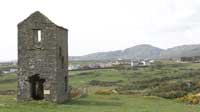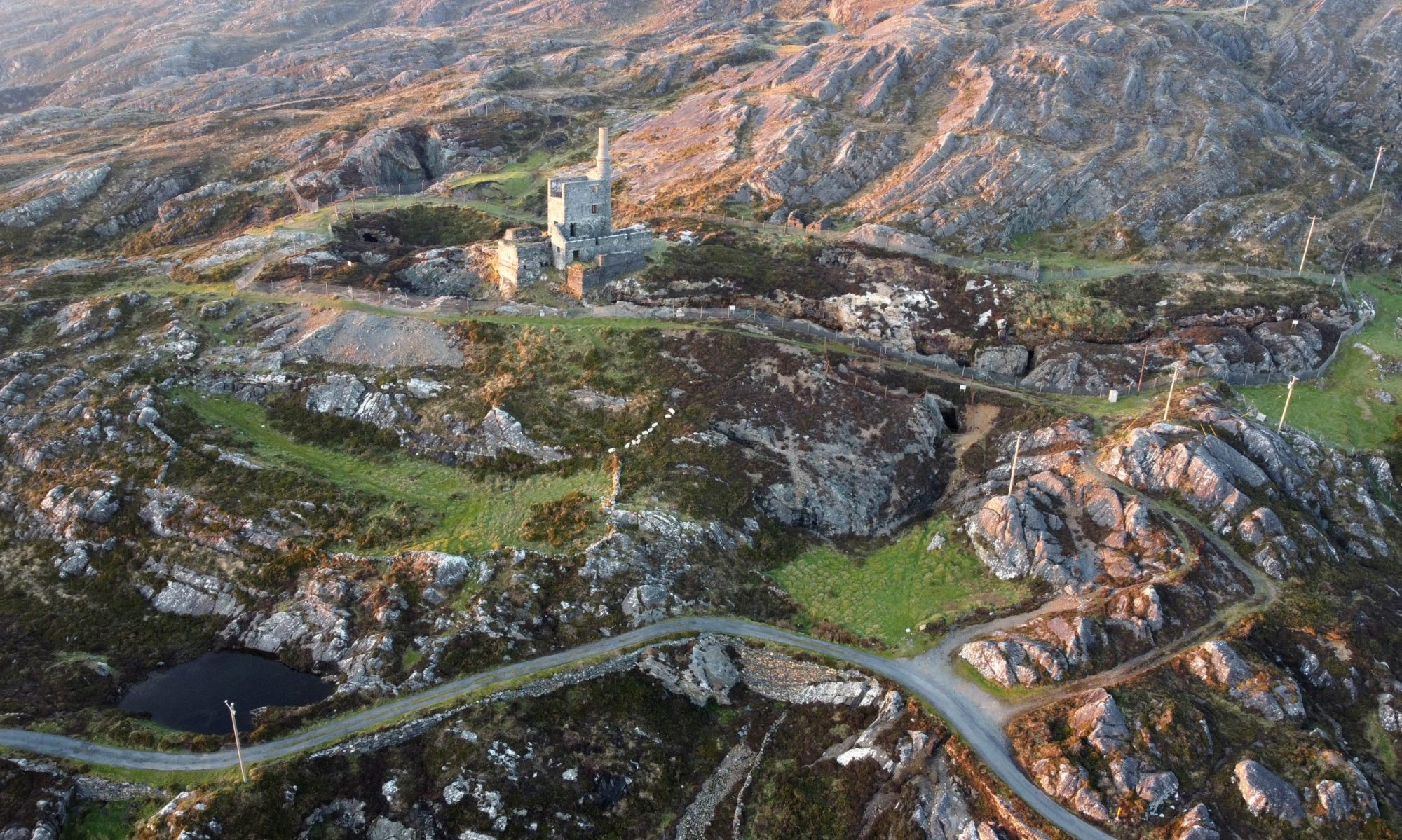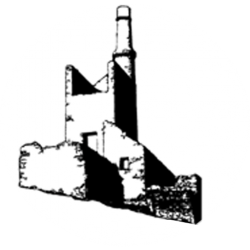Kealogue Mine Mianach Chaolóige
This was a very extensively worked mine which was opened in 1842. It is a continuation of the same fault as Caminches Mine. Over eighteen shafts were sunk along a 2,000 metre long by 25 metre wide north-northeast tending quartz vein.
There were at least four engine houses erected along this vein, only one of which has survived. This is known as Puxley’s, and housed a 50 inch steam engine brought from Cornwall in 1845. It was a pumping engine lifting water from the  bottom of the mine 400 meters below. This water was discharged underground into a tunnel that leads from Puxley’s engine to the stream below the graveyard in the Village.
bottom of the mine 400 meters below. This water was discharged underground into a tunnel that leads from Puxley’s engine to the stream below the graveyard in the Village.
Spread over this site at the height of its operation was an extensive complex of buildings which included a timber yard and stables as well as ore dressing floors further down the road. The quartz sand that was left over after the dressing process when all the copper ore was extracted was washed down to Ballydonegan where it made the beach that we enjoy today.
Between 1861 and 1868 there was a lot of unrest amongst the workers resulting in three strikes over pay and conditions.
After Henry Puxley sold the mines in 1868, Kealogue Mine continued to be productive for the new owners, the Berehaven Mining Company, who extracted a further 1,473 tons of ore before its final closure in 1882.

